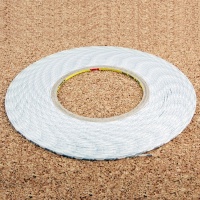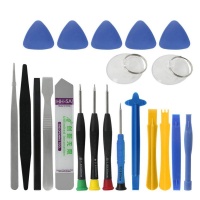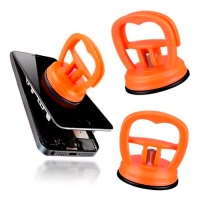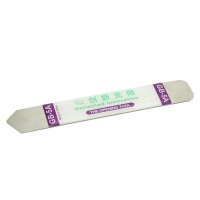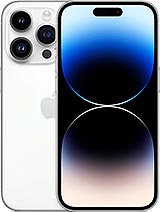 Repair parts iPhone 14 Pro
Repair parts iPhone 14 Pro


Receive it on tomorrow wednesday 17 december
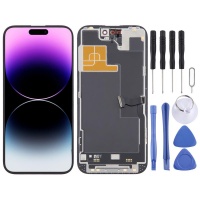
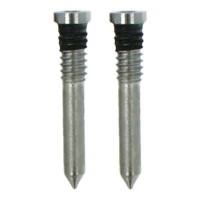

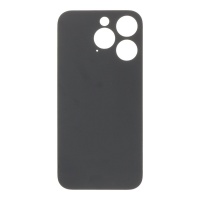


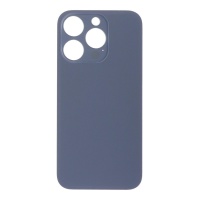
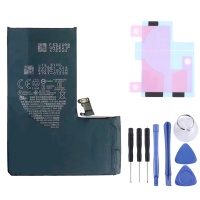

Receive it on tomorrow wednesday 17 december
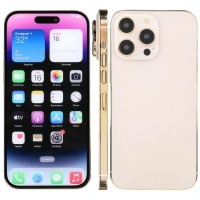
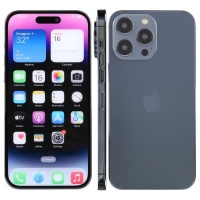


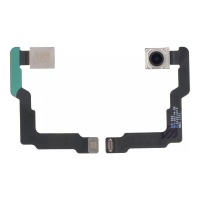

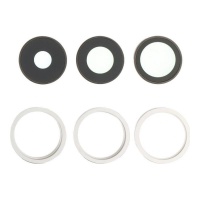
Receive it on tomorrow wednesday 17 december
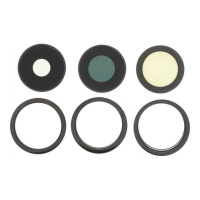
Receive it on tomorrow wednesday 17 december

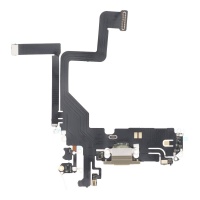
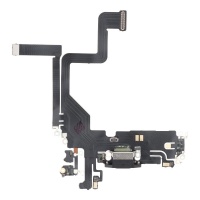
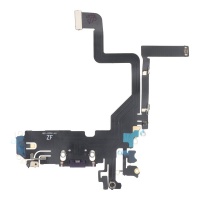
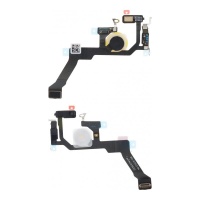
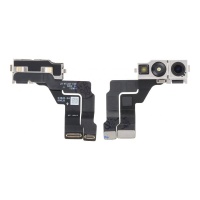
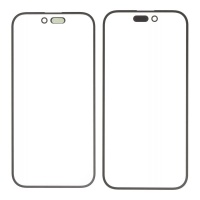



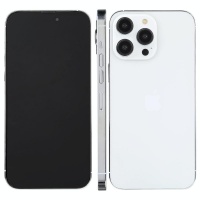


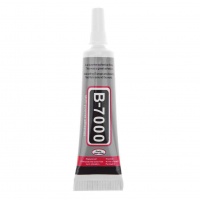
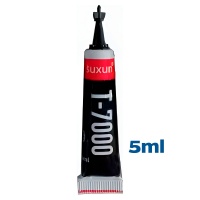
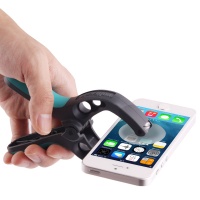
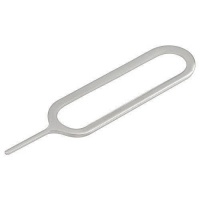

Receive it on tomorrow wednesday 17 december


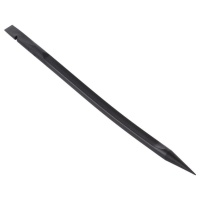
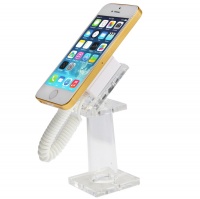
Parts for iPhone 14 Pro: Everything You Need to Know for a Successful Repair 📱
Welcome to iLevante.com, your trusted shop for finding high-quality parts for iPhone 14 Pro. If your device has had an accident or one of its parts has stopped working correctly, you're in the right place. In this article, we'll guide you through the features of the iPhone 14 Pro, the most common problems requiring repair, and the specific parts you need to bring your mobile phone back to life.
We know you're looking for reliable and durable components for iPhone 14 Pro, and our aim is to provide you with both the components and the information necessary for you to make the best decision.
The iPhone 14 Pro: Innovation and Performance That Deserve the Best Repair
The iPhone 14 Pro was launched as a benchmark in mobile technology, standing out for its powerful A16 Bionic chip, advanced Pro camera system, and Super Retina XDR display with ProMotion and Dynamic Island. Here are some of its key features:
- Display: 6.1-inch Super Retina XDR OLED, 2556 x 1179 pixel resolution, ProMotion (up to 120Hz), Always-On Display, and Dynamic Island.
- Chip: A16 Bionic with 6-core CPU, 5-core GPU, and 16-core Neural Engine.
- Rear Cameras: 48MP Pro system (Main) + 12MP (Ultra Wide) + 12MP (3x Telephoto), with Photonic Engine and ProRes video recording.
- Front Camera: 12MP TrueDepth with autofocus.
- Battery: 3200 mAh Li-Ion (approximately 12.38 Wh), with fast charging and MagSafe.
- Build: Surgical-grade stainless steel and textured matt glass back.
Common Hardware Problems with the iPhone 14 Pro: When Do You Need iPhone 14 Pro Parts?
Despite its robustness, the iPhone 14 Pro is not immune to mishaps. Some of the most frequent problems that lead users to search for replacement parts for iPhone 14 Pro include:
- Screen damage: Cracks, breaks, coloured lines, dead pixels, or problems with touch functionality.
- Degraded battery: Noticeable decrease in battery life, unexpected shutdowns, or general device slowness.
- Camera problems: Blurry photos, incorrect focus, spots on images, or the camera app not working.
- Charging port failures: The phone not charging, intermittent charging, or the cable not connecting correctly.
- Cracked back glass: The back glass can crack or break after a fall.
- Speaker or microphone failures: Sound problems during calls or multimedia playback.
At iLevante.com, you'll find the solution to these and other problems with our wide range of components for iPhone 14 Pro.
Screens for iPhone 14 Pro: Bring Your Display Back to Life ✨
The screen is one of the most vital and, at the same time, most exposed components of the iPhone 14 Pro. If you need a replacement screen for iPhone 14 Pro, it's crucial to know the available options:
Types of Replacement Screens for iPhone 14 Pro
The iPhone 14 Pro uses an advanced OLED display. When looking for a replacement, you'll find various qualities:
- Original Screens (OEM / Apple Service Parts): These are screens manufactured by Apple or its direct suppliers. They offer the highest quality, brightness, colour reproduction, touch response, and compatibility with all iPhone 14 Pro features, such as ProMotion (120Hz) and True Tone. They are the most expensive option but guarantee an identical experience to the original.
-
OLED Screens (Aftermarket): These screens use OLED technology, like the original, but are manufactured by third parties. Within this category, there are different quality levels:
- Soft OLED: These are considered the highest quality within the aftermarket parts market. They use a flexible plastic substrate, similar to original screens, which allows for a better fit to the phone's frame, greater durability against minor impacts, and colour reproduction and brightness very close to the original. They are generally compatible with ProMotion, although it's important to verify this.
- Hard OLED: These use a rigid glass substrate. They are more economical than Soft OLEDs but can be slightly thicker, have slightly more noticeable bezels, and be more fragile. The image quality is still good, superior to LCDs, but may not reach the vibrancy and viewing angles of a Soft OLED or an original.
- AMOLED Screens: AMOLED (Active Matrix Organic Light Emitting Diode) is a type of OLED technology. The iPhone 14 Pro's original screen is, in fact, an LTPO Super Retina XDR OLED display (which is a form of AMOLED). When you see "AMOLED" in the spare parts market, it generally refers to aftermarket OLED screens, and their quality will depend on whether they are Soft OLED or Hard OLED.
- INCELL and TFT (LCD) Screens: These are LCD technologies. INCELL screens integrate the touch panel into the LCD structure itself, making them thinner than traditional TFTs. However, for a premium device like the iPhone 14 Pro, which originally uses OLED, opting for an LCD screen (whether INCELL or TFT) would mean a significant loss of quality: lower contrast (less deep blacks), less vibrant colours, reduced viewing angles, higher power consumption, and the loss of features like the Always-On Display and, most likely, ProMotion. At iLevante.com, we advise against these options for the iPhone 14 Pro if you're looking to maintain an optimal user experience.
When to Replace Your iPhone 14 Pro Screen?
You should consider changing the screen of your iPhone 14 Pro if you experience:
- Visible cracks or breaks in the glass.
- Black spots, coloured lines, or dead pixels.
- Problems with touch response (ghost touches, unresponsive areas).
- A completely black, white, or blank screen, but the phone is still on (receives notifications, vibrates).
- Flickering or image distortions.
Basic Guide to Changing the iPhone 14 Pro Screen
Replacing the iPhone 14 Pro screen is a delicate task that requires patience and specific tools. Here's a basic outline of the process (it is strongly recommended that if you don't have experience, you seek help from a qualified technician):
- Preparation: Turn off the iPhone and gather the necessary tools (small Pentalobe and Phillips screwdrivers, suction cup, opening picks, plastic spudger, heat gun or hairdryer).
- Opening: Remove the two Pentalobe screws located on either side of the charging port. Apply moderate heat to the edges of the screen to soften the adhesive. Use the suction cup to create a small gap and insert a pick to cut the adhesive around the perimeter. Open the screen carefully, usually to one side like a book.
- Disconnection: Locate and remove the metal shields covering the battery and screen connectors. Disconnect the battery first to avoid short circuits. Then, disconnect the screen and front sensor assembly flex cables.
- Transferring Components (Important): In many cases, you'll need to transfer the earpiece speaker and TrueDepth sensor assembly (IR camera, dot projector) from your original screen to the new one. This step is crucial, as Face ID will stop working if the TrueDepth assembly is damaged or not transferred correctly.
- Connection and Testing: Connect the new screen and battery. Turn on the iPhone to test the screen's functionality (touch, image, brightness) before sealing it.
- Sealing: If everything works correctly, apply new sealing adhesive strips to maintain water and dust resistance (though it will never be the same as factory-sealed after an unofficial repair). Close the phone, replace the shields and screws.
Warning: Screen repair can be complex. Apple uses a "pairing" process for some parts. When replacing the screen, even with an original one, "unknown part" messages may appear, or features like True Tone may be lost if calibration with specific Apple tools is not performed. High-quality aftermarket screens attempt to mitigate this, but it's a factor to consider.
iPhone 14 Pro Battery: Lasting Power for Your Day-to-Day 🔋
The battery is essential for enjoying all the features of your iPhone 14 Pro. Over time, its capacity degrades, affecting battery life and performance.
Understanding the iPhone 14 Pro Battery (Model A2866)
The iPhone 14 Pro uses an internal rechargeable lithium-ion battery with the following approximate specifications:
- Battery Model (APN): A2866 (This is a common identifier for compatible or replacement batteries for the iPhone 14 Pro).
- Capacity: 3200 mAh (milliampere-hours).
- Nominal Voltage: 3.87 V.
- Energy: Approximately 12.38 Wh (watt-hours).
At iLevante.com, we offer batteries for iPhone 14 Pro that meet these standards to ensure optimal performance.
How to Know if Your iPhone 14 Pro Battery is Faulty?
iOS helps you check your battery's condition:
- Go to Settings > Battery > Battery Health & Charging.
- Check the "Maximum Capacity" percentage. If it's below 80%, Apple considers the battery significantly degraded.
- Note if any message appears under "Peak Performance Capability". If the battery cannot supply the necessary peak power, the iPhone's performance might be limited to prevent shutdowns.
Other symptoms of a faulty iPhone 14 Pro battery include:
- Rapid draining: the battery lasts much less time than before.
- Unexpected shutdowns, even with a considerable charge percentage.
- The iPhone only works when plugged into the charger.
- Very slow charging or not charging completely.
- Excessive overheating during charging or use.
- Physical swelling of the battery (this is dangerous and requires immediate attention).
OEM Batteries Without Logo: Original Quality Without the Brand
When looking for a replacement battery for iPhone 14 Pro, it's common to find terms like "OEM without logo" or "Original Quality". Here's what they mean:
- OEM (Original Equipment Manufacturer): These are parts made by the same company that produces the original components for Apple, or to its strict specifications. Ideally, an OEM battery should offer the same performance and lifespan as the original.
- OEM without Logo / Original Quality: This term refers to batteries that, although they don't carry the Apple brand (due to licensing issues or because they are for the replacement parts market), are manufactured to the same quality standards, materials, and technology as the originals. They may come from the same production lines or from manufacturers specialising in replicating original quality. They are an excellent alternative for obtaining performance similar to the original at a more competitive price. At iLevante.com, we strive to offer batteries that fit this description, prioritising safety and performance.
Important: Apple has implemented software systems that may display an "unknown part" or "service" message in Settings if a non-verified battery is installed, even if it's high-quality OEM. This usually doesn't affect battery performance, but the "Battery Health" percentage might not be displayed. Some very high-quality replacement batteries include chips that attempt to mitigate these messages.
Quick Guide: Changing the iPhone 14 Pro Battery (Screen Access)
Changing the iPhone 14 Pro battery involves opening the device via the screen, similar to a screen replacement. Again, caution is advised, and professional help is recommended if you lack experience.
- Follow steps 1 to 3 of the screen replacement guide to open the iPhone and disconnect the original battery.
- Removing the Original Battery: The battery is secured to the chassis with strong adhesive strips. Locate the pull-tabs for these strips (usually at the edges of the battery). Pull them slowly and steadily at a low angle. If they break, you may need to carefully apply a little isopropyl alcohol around the battery's edges to soften the adhesive and then gently pry with a plastic card or non-metallic spudger. Avoid puncturing or bending the battery.
- Installing the New Battery: Place new battery-specific adhesive strips on the chassis or the new battery. Connect the new battery to the main board.
- Closing and Testing: Reconnect the screen flex cables, replace the shields, close the phone, and reinsert the Pentalobe screws. Turn on the iPhone and check that the new battery is recognised and charges correctly. It's advisable to calibrate the new battery by charging it to 100%, leaving it to charge for about 2 more hours, then using it until it powers off, and finally recharging it to 100% without interruption.
Back Glass for iPhone 14 Pro: Aesthetics and Protection 🛡️
The elegant textured matt glass back of the iPhone 14 Pro is one of its hallmarks, but it's also susceptible to breaking from falls.
Protect and Renew: Back Glass for iPhone 14 Pro
The back glass for iPhone 14 Pro is made of durable glass and comes in Apple's original colours:
- Space Black
- Silver
- Gold
- Deep Purple
Replacing a broken back glass not only improves the aesthetics but also helps protect internal components and can restore wireless charging functionality if it was affected by the break.
At iLevante.com, you'll find back glass panels that fit your iPhone 14 Pro perfectly, including options with a standard-sized camera opening or the "Big Hole" option.
- Standard Back Glass: Requires removing the camera lens glass from the broken back and transferring them to the new one, or installing new lens glass. It's a more laborious process.
- "Big Hole" Back Glass: These back panels come with a larger opening for the camera module, allowing the back to be installed without needing to handle the delicate individual camera lens glass. This significantly simplifies the repair, making it a popular DIY option.
How to Change the iPhone 14 Pro Back Glass?
Changing the iPhone 14 Pro back glass is one of the most complex and time-consuming repair processes, due to the strong adhesive used by Apple and the risk of damaging other components. This repair is particularly difficult, and it is strongly recommended that it be performed by a professional with experience and appropriate tools (such as a laser machine to remove the adhesive).
Broadly, the manual process involves:
- Disassembly (Optional but Recommended): To minimise risks, many technicians choose to disassemble almost all internal components of the phone (main board, battery, cameras, etc.). This is especially important if a laser machine is not used.
- Heating: Apply intense and uniform heat to the back glass to soften the adhesive. Much more heat is required than for opening the screen.
- Removing the Broken Glass: Using protective gear (gloves, goggles), carefully break and remove the pieces of glass. This process is slow and meticulous. Special care must be taken with the wireless charging coil, button flex cables, flash, and other components near the edge or under the glass.
- Thorough Cleaning: Once all the glass is removed, meticulously clean the frame of any adhesive residue and glass shards.
- Applying Adhesive: Place new pre-cut adhesive sheets or apply liquid adhesive specific for back glass.
- Installing the New Back Glass: Carefully align the new back glass and press it firmly for the adhesive to set. Clamps or pressure may be used for some time to ensure a good bond.
Impact on Water Resistance: After a back glass replacement performed outside of an official Apple service, it's highly probable that the device's water and dust resistance will be compromised.
Essential Spares for Your iPhone 14 Pro at iLevante.com 🛒
Besides screens, batteries, and back glass, there are many other components for iPhone 14 Pro that may need replacing. Here are some of the most in-demand ones and the most relevant information:
Front Camera with IR (TrueDepth) for iPhone 14 Pro
Relevant Information: This is the module housing the 12MP front camera (f/1.9 with autofocus) and the infrared sensors (IR camera, dot projector) responsible for Face ID technology. It enables high-quality selfies, clear video calls, and features like Animoji/Memoji.
Failure Symptoms: Face ID not working or not setting up ("Face ID Not Available"), blurry or poor-quality selfies, camera app closing when switching to the front camera, dots or artefacts in front camera images.
Ideal Replacement: A high-quality module, ideally OEM or equivalent, ensuring all sensors function correctly. Some versions may come with pre-installed flex cables for easier installation.
⚠️ CRUCIAL WARNING ABOUT FACE ID: The TrueDepth system is paired with your iPhone's main board. Replacing the front camera module, even with an original Apple part, will likely result in the permanent loss of Face ID functionality if calibration is not performed using Apple's "System Configuration" or "Repair Assistant" software by a certified technician or Apple. "Unknown part" messages may appear. If only the front camera glass is damaged but the sensor works, it's sometimes preferable not to change the entire module if you want to preserve Face ID at all costs.
Panoramic Front Camera for iPhone 14 Pro
Relevant Information: This term generally refers to the same 12MP TrueDepth camera mentioned above, which, thanks to its optics, is capable of capturing panoramic selfies (widening the field of view). It's not a separate component but a feature of the main front camera.
Failure Symptoms and Ideal Replacement: See the "Front Camera with IR (TrueDepth)" section.
Rear Camera for iPhone 14 Pro (Complete Module)
Relevant Information: The iPhone 14 Pro features a sophisticated triple rear camera system: a 48MP main sensor (wide-angle), a 12MP ultra-wide-angle, and a 12MP telephoto lens (3x optical zoom). This module also includes the True Tone flash and may be associated with the LiDAR scanner for augmented reality features and improved focus.
Failure Symptoms: Blurry or out-of-focus photos, black spots or marks on images, the camera app displaying a black screen when selecting one of the lenses, flash not working, problems with Portrait or Cinematic mode, physically broken lenses.
Ideal Replacement: A complete rear camera module of OEM or equivalent quality, including all three sensors and their flex cables. It must ensure compatibility with all advanced features like Photonic Engine, ProRes, Action mode, etc.
⚠️ Note on Pairing: As with the front camera, the rear cameras may also be subject to pairing with the main board. Replacing the rear camera module, even with an original part, could generate "unknown part" messages or the loss of certain functionalities if calibration is not performed via Apple's software. Prioritise high-quality replacement parts to minimise these risks.
Flash Sensor Flex Cable for iPhone 14 Pro
Relevant Information: This component is a flexible cable (flex) containing the True Tone flash LED and often a rear microphone and/or additional sensors related to the camera or LiDAR system. It's crucial for taking photos in low-light conditions and for the torch function.
Failure Symptoms: Flash not activating when taking photos, torch not turning on, flash very dim or incorrect colour, problems with the rear microphone if integrated into this flex cable.
Ideal Replacement: A replacement flex cable that exactly matches the original specifications, ensuring the correct functionality of the flash LED and any other sensor or microphone it includes. The quality of the flex cable is important to avoid tears during installation.
Note: This flex cable can be easily damaged during back glass repairs if extreme care is not taken.
Rear Camera Lens and Frame for iPhone 14 Pro / Pro Max (Lens Glass)
Relevant Information: Refers to the small individual glass covers for each lens of the rear camera module and, in some kits, the small metal frame surrounding them (though just the glass is more common). This glass is sapphire for high scratch resistance.
Failure Symptoms: One or more lens glass covers are broken, cracked, or badly scratched, affecting photo quality (blurry images, glare, or artefacts) even if the camera sensor itself is intact.
Ideal Replacement: A set of high-quality sapphire lens glass covers, with pre-cut adhesive for easy installation. It's a much less invasive and more economical repair than changing the entire camera module if only the external glass is damaged.
Installation Note: Requires very careful removal of the broken glass debris without scratching the internal camera sensor lens. It's a delicate operation. "Big Hole" back glass panels eliminate the need for this repair if the entire back is replaced.
Charging Port Flex Cable (Lightning Connector Assembly) for iPhone 14 Pro
Relevant Information: This is a vital component that includes the Lightning connector for charging and data transfer, and usually also integrates the main microphone (used for calls), and sometimes, contacts for antennas or the Taptic Engine.
Failure Symptoms: The iPhone not charging or charging intermittently, the computer not recognising the device when connected, the connector being loose or physically damaged, problems with the main microphone (people can't hear you well on calls).
Ideal Replacement: A high-quality charging port flex cable assembly, with a robust Lightning connector and microphones offering audio quality similar to the original. The quality of the contacts and the flex cable itself is crucial for a long lifespan.
Repair Note: Replacing the charging port is one of the most complex repairs, as it requires disassembling much of the phone, including the screen, battery, and sometimes the main board or Taptic Engine to access it. A lot of patience and organisation with screws are needed.
Other Important Replacement Parts for iPhone 14 Pro 🛠️
In addition to those mentioned, at iLevante.com you can also find other parts for iPhone 14 Pro that may be necessary:
- Earpiece Speaker: The speaker you use to listen during calls. If it sounds quiet, distorted, or there's no sound, you'll need to replace it. May include associated sensors; be careful with Face ID!
- Main Loudspeaker: Responsible for the ringtone, music in speakerphone mode, and video audio. If the sound is poor quality or non-existent, this is the part to replace.
- Taptic Engine (Vibration Motor): Provides haptic feedback and vibrations. If your iPhone has stopped vibrating or the vibration is weak or strange, the Taptic Engine could be the culprit.
- Power and Volume Button Flex Cable: If the physical power or volume buttons don't respond or do so erratically, the internal flex cable is likely damaged.
- Antennas (Wi-Fi, Bluetooth, Cellular): Persistent connectivity problems not resolved by software resets or adjustments may indicate a fault in one of the device's multiple antennas.
- SIM Tray: Although simple, a damaged or lost SIM tray prevents the use of cellular connectivity.
- Screws: It's easy to lose one during a repair. Having a set of screws specific to the iPhone 14 Pro is always a good idea.
Software vs. Hardware Problems: A Technical Perspective 👨🔧
Sometimes, a problem that seems hardware-related can originate from software, or vice versa. As technicians (and for advanced users), it's crucial to distinguish and address these scenarios, especially with Apple's repair policies.
Software or Hardware Failure? Preliminary Diagnosis
Before opening the device, a technician usually performs these software steps:
- Forced Restart: Solves minor glitches and freezes.
- iOS Update: Ensures the operating system is up to date, correcting known bugs. (Settings > General > Software Update).
- App Review: An app might be causing conflicts, especially if the problem is recent or limited to one app.
- Reset Settings:
- Reset Network Settings: Useful for Wi-Fi or mobile data issues.
- Reset All Settings: Doesn't delete personal data but returns settings to factory defaults.
- Check Storage: Nearly full storage can cause slowness and errors. (Settings > General > iPhone Storage).
- DFU Restore (Device Firmware Update): As a last software resort, completely reinstalls the firmware and operating system. Deletes all data.
If the problem persists after these steps, a hardware failure is highly probable.
The Importance of Part Calibration and "Unknown Part" Messages
Apple has increased "serialisation" or "pairing" measures for key components with the iPhone's main board. This means that even if you replace a damaged part (like the screen, battery, or cameras) with an original Apple part, the operating system can detect it. If a post-repair calibration process isn't performed using Apple's proprietary software ("Apple System Configuration" or "Repair Assistant", accessible only to Apple Authorised Service Providers or through the Self Service Repair programme), several things can happen:
- A message appearing in Settings > General > About indicating "Unknown Part" or an "Important Battery/Display/Camera Message".
- Loss of certain functionalities:
- Screen: True Tone might stop working.
- Battery: The "Battery Health" section in Settings might not show the maximum capacity percentage.
- Front Camera (TrueDepth): Face ID will almost certainly stop working.
- Rear Camera: Some advanced features or optimal quality might be affected.
From the perspective of an independent technician or a user performing a DIY repair, this is a challenge. Very high-quality parts for iPhone 14 Pro (OEM or equivalent) may function perfectly at the hardware level, but these software messages or limitations can persist. It's essential to be transparent with the customer (or yourself) about these possibilities.
At iLevante.com, we strive to offer parts that minimise these inconveniences, but Apple's current policy is beyond the control of parts suppliers.
Your iPhone 14 Pro Deserves the Best Parts: Trust iLevante.com ✅
Repairing your iPhone 14 Pro can be an economical and sustainable alternative to replacing it. At iLevante.com, we are committed to offering you the highest quality parts and components for iPhone 14 Pro, along with the information you need for your repair to be a success.
Explore our catalogue, and if you have any questions, don't hesitate to contact us! We're here to help your iPhone 14 Pro be like new again. 🚀

